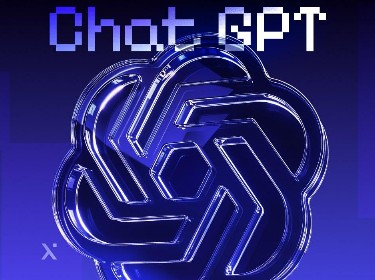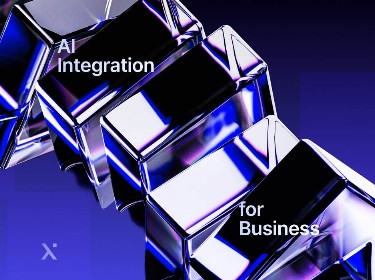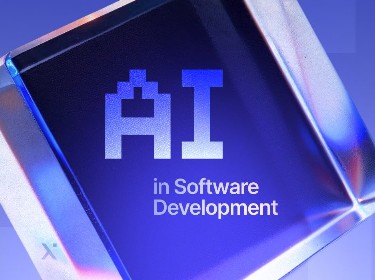What if, instead of a waiting room filled with outdated magazines, your first point of contact was a friendly, intelligent, and instantly available digital assistant?
“The doctor will see you now.”
For generations, that phrase has been the gateway to healthcare. But what if you could get answers to your health questions, schedule appointments, and even get a preliminary symptom check at any time of day, from the comfort of your couch?
This is rapidly becoming the new reality. In fact, by 2025, it’s estimated that nearly 50% of patients will prefer to use a chatbot for initial medical inquiries, and the global healthcare chatbots market is projected to skyrocket to over $22.6 billion by 2031. This is the reality that AI chatbots in healthcare are creating, and it’s a revolution that’s picking up speed.
Here at PixelPlex, we’re not just watching this transformation from the sidelines. With our deep expertise in AI chatbot development and healthcare software development, we’ve been at the forefront of building the future of digital health. That’s why we’ve created this comprehensive guide – to give you a detailed, no-fluff look into the world of healthcare chatbots.
What is a healthcare chatbot?
Let’s break it down. At its core, a healthcare chatbot is a software application that uses artificial intelligence (AI) and natural language processing (NLP) to understand and respond to human language. Think of it as a super-smart virtual assistant specifically trained for the world of medicine. You can interact with it through text, voice, or even a website interface.
But here’s where it gets interesting. We’re not talking about those clunky, “I don’t understand” bots of the past. Modern medical AI chatbot solutions are sophisticated, empathetic, and capable of handling a surprisingly wide range of tasks. They’re like a friendly, digital front door to the often-complex world of healthcare, designed to guide, inform, and assist without the wait times.
| Component | Description |
| Natural language processing (NLP) | The technology that allows the chatbot to understand and interpret user queries. |
| Knowledge base | A repository of medical information, including symptoms, diseases, and medications. |
| Machine learning (ML) | Enables the chatbot to learn from past interactions to improve accuracy. |
| Integration with healthcare systems | Connects with systems like electronic health records (EHRs) to access patient data. |
| Data security & compliance | Protects sensitive patient information and adheres to regulations like HIPAA. |
| Conversational interface | The user-facing part of the chatbot, designed for natural dialogue. |
| Human escalation | Routes complex or urgent queries to a human healthcare professional. |
| Sentiment analysis | Helps the chatbot detect a patient’s emotional tone to respond empathetically. |
Benefits of a medical AI chatbot
So, why is everyone from small clinics to large hospitals so excited about chatbots in healthcare? The answer lies in a powerful combination of benefits for patients, providers, and administrators.
For patients: a healthcare companion in your pocket
- 24/7 availability: Health concerns don’t stick to a 9-to-5 schedule. A chatbot for healthcare is always on, ready to answer questions, provide information, or help you find the right care, even in the middle of the night.
- Instantaneous responses: No more waiting on hold or anxiously Googling your symptoms. Chatbots provide immediate answers to your queries, reducing anxiety and providing peace of mind.
- Accessibility and convenience: For those with mobility issues, busy schedules, or who live in remote areas, a health AI chatbot can be a lifeline, providing access to healthcare information and services without the need for a physical visit.
- Anonymity and a judgment-free zone: Let’s be honest, some health topics can be embarrassing to discuss. Chatbots provide a safe and anonymous space to ask sensitive questions, which is particularly beneficial for mental health support.
For healthcare providers: your new assistant
- Reduced workload and burnout: Physician and nurse burnout is a critical issue worldwide. By handling routine tasks like appointment scheduling, answering FAQs, and collecting initial patient information, chatbots free up medical professionals to focus on what they do best: providing quality patient care and complex decision-making.
- Improved efficiency: A single chatbot for healthcare can handle thousands of conversations simultaneously, something no human can do. This scalability means that healthcare providers can serve more patients without increasing their staff.
- Better patient data: Chatbots can collect and organize patient data in a structured way, providing a comprehensive overview of a patient’s history, symptoms, and concerns before they even step into the doctor’s office. This pre-consultation intelligence leads to more focused and effective appointments.
For administrators: a more streamlined and cost-effective operation
- Cost savings: The automation of administrative tasks leads to significant cost reductions. A Juniper Research report predicted that chatbots could save the healthcare industry billions of dollars annually by handling inquiries and automating processes.
- Streamlined operations: From managing appointments to handling insurance queries, a chatbot solution for healthcare can automate a wide range of administrative processes, leading to a more efficient and organized healthcare facility.
- Enhanced patient engagement: By providing a more accessible and convenient way for patients to interact with their healthcare provider, chatbots can improve patient engagement and satisfaction, leading to better health outcomes and a more loyal patient base.
AI Business Ideas
AI in Transportation Overview 2025
AR in eCommerce: Application, Benefits, Challenges
Real-world use cases of AI chatbots in healthcare
The theoretical benefits are impressive, but where are we actually seeing AI chatbots in healthcare making a difference? The applications are vast and growing every day.
![]()
Symptom checking and triage
This is one of the most common and powerful use cases. A medical chatbot can ask a series of questions to assess a patient’s symptoms and then recommend the appropriate course of action, whether it’s scheduling a doctor’s appointment, seeking emergency care, or managing the symptoms at home.
Appointment scheduling and management
Say goodbye to the phone tag. Chatbots can seamlessly schedule, reschedule, and cancel appointments, sending reminders to reduce no-show rates, which can be a significant drain on a clinic’s revenue.
Medication reminders and adherence
For patients with chronic conditions, remembering to take medication can be a challenge. A healthcare chatbot can send timely reminders, provide information about dosages, and even track adherence, ensuring that patients stick to their treatment plans.
Mental health support
The demand for mental health services is at an all-time high. AI-powered chatbots are providing a valuable resource for those seeking support for conditions like anxiety and depression, offering a listening ear and evidence-based therapeutic techniques like Cognitive Behavioral Therapy (CBT).
Insurance and billing inquiries
Navigating the world of health insurance can be a nightmare. A medical AI chatbot can help patients understand their coverage, check the status of a claim, and get answers to their billing questions, reducing the burden on administrative staff. This is one of the many ways AI is being applied to the healthcare sector, complementing the broader trend of adopting new technologies in financial software development.
Answering FAQs
Every healthcare provider gets bombarded with the same questions over and over: “What are your hours?” “Do you accept my insurance?” “Where do I park?”. A chatbot can handle these FAQs flawlessly, 24/7.
Post-discharge follow-up
Chatbots can check in with patients after they’ve been discharged from the hospital, asking about their recovery, reminding them of follow-up appointments, and watching for any potential complications.
Useful and popular chatbots to watch for this year
To give you a clearer picture of what’s possible, let’s look at ten innovative healthcare chatbots that are making waves in 2025-2026. These are great examples for any healthcare business looking for inspiration.
![]()
Ada health
A sophisticated AI-powered symptom checker that uses a vast medical database to help users understand their symptoms and guides them to the right care. It’s known for its accuracy and user-friendly interface.
Babylon health
This platform offers a comprehensive digital health service, including an AI-powered chatbot for triage and consultations, as well as the ability to connect users with real doctors for virtual appointments.
Woebot health
A leader in the mental health space, Woebot is a chatbot grounded in Cognitive Behavioral Therapy (CBT). It provides daily check-ins, mood tracking, and guided exercises to help users manage anxiety and depression. It’s a prime example of a chatbot providing empathetic, accessible mental health support.
Buoy health
Buoy uses an AI algorithm to analyze a patient’s symptoms against real-time data, helping them navigate their care options. It feels like talking to a real doctor and is excellent at triage.
Youper
Another powerful mental health chatbot, Youper uses AI to personalize conversations and techniques based on the user’s needs. It helps users understand their emotions and thoughts, acting as an emotional health assistant.
Florence
A friendly “personal nurse” chatbot that focuses on medication management. It reminds users to take their pills, tracks their health metrics (like weight or mood), and can find the nearest pharmacy.
GYANT
Initially a symptom checker, GYANT now partners with health systems to create custom-branded chatbots that guide patients from the moment they have a health concern to finding the right provider within that system.
Infermedica
This company provides a powerful AI triage platform that other healthcare companies can integrate into their own systems. Their “Symptomate” tool is a highly accurate and customizable symptom checker.
K Health
K Health offers a unique approach by using anonymized data from millions of real patient records to show users how doctors have diagnosed and treated people with similar symptoms and profiles. It combines a chatbot with the option to chat with a doctor for a low fee.
Sensely
This chatbot uses an avatar-based, conversational interface to connect patients with advice and services. It’s highly visual and can be used for chronic disease management, symptom checking, and more, offering a more “human” feel to the digital interaction.
How to Implement AI-based Recommendation System
How Much Does AI Development Cost?
Challenges and ethical considerations
Of course, it’s not all sunshine and roses. The implementation of AI chatbots in healthcare comes with its own set of challenges and ethical considerations that need to be addressed.
Data privacy and HIPAA compliance
Healthcare data is incredibly sensitive. Any chatbot solution for healthcare must be built with a security-first mindset and be compliant with regulations like the Health Insurance Portability and Accountability Act (HIPAA) in the US or GDPR in Europe to ensure that patient information is kept confidential and secure.
Accuracy and the risk of misdiagnosis
The stakes are high in healthcare. A misdiagnosis from a chatbot could have serious consequences. It’s crucial that chatbots are trained on high-quality, evidence-based medical data, are transparent about their limitations, and know when to escalate a conversation to a human healthcare professional. They are a tool to assist, not replace, doctors.
Lack of human touch and empathy
While chatbots can be programmed to be “empathetic,” they can’t replicate the genuine human connection and nuanced understanding of a real doctor. It’s important to find the right balance between technological efficiency and human interaction.
Integration with existing systems
For a chatbot to be truly effective, it needs to be integrated with a healthcare provider’s existing systems, such as Electronic Health Records (EHRs). This can be a complex and challenging technical hurdle.
Digital literacy and accessibility
Not all patients are tech-savvy. It’s important to design chatbots that are intuitive and easy to use for people of all ages and technical abilities, ensuring they don’t create a new barrier to care.
What are AI agents? Key types, examples, and benefits – explore in our article →
AI chatbot for healthcare costs: breaking down the investment
When considering a medical AI chatbot, one of the first questions on any executive’s mind is, “What’s this going to cost?” The answer is, “it depends,” but we can break down the factors that influence the price tag and help you understand the potential return on investment (ROI).
![]()
The initial investment: what are you paying for?
Developing a robust chatbot isn’t a simple plug-and-play affair. The upfront costs typically include:
- Discovery and strategy: The initial phase where you work with a development partner to define goals, user personas, conversational flows, and technical requirements.
- Design (UI/UX): Creating an intuitive and engaging interface. A good user experience is critical for patient adoption.
- Development and engineering: This is the core of the cost, where developers build the chatbot, its NLP engine, and its backend logic.
- AI model training: For a sophisticated chatbot, the AI needs to be trained on relevant medical data and conversational patterns.
- Integration: The cost of securely connecting the chatbot to your EHR, CRM, scheduling software, and other systems.
- Compliance and security audit: Ensuring the solution is fully HIPAA compliant and secure from potential threats.
A simple, FAQ-based chatbot might cost anywhere from $20,000 to $40,000. A more complex, AI-powered chatbot with EHR integration and custom features can range from $50,000 to well over $150,000.
Beyond the build: ongoing costs
It’s also crucial to budget for recurring expenses:
- Maintenance and support: Keeping the chatbot running smoothly, fixing bugs, and providing support.
- Cloud hosting: The cost of the servers that run your chatbot.
- Software licensing: Fees for any third-party platforms or APIs used.
- Continuous improvement: The healthcare landscape changes. Your chatbot will need regular updates to its medical knowledge base and functionalities.
Calculating the return on investment (ROI)
The high price tag can be daunting, but the ROI can be substantial. Here’s how a chatbot pays for itself:
- Reduced labor costs: Calculate the hours your staff spends on repetitive tasks like scheduling and answering FAQs. A chatbot can automate a huge percentage of this, freeing up staff and potentially reducing the need for new hires.
- Lower patient acquisition costs: By providing a better user experience, you can increase patient loyalty and attract new patients.
- Fewer appointment no-shows: Automated reminders have been shown to reduce no-show rates by a significant margin, directly impacting revenue.
- Increased operational efficiency: By streamlining workflows, you can serve more patients more effectively with the same resources.
When you weigh the significant long-term savings and efficiency gains against the initial investment, a well-designed chatbot often proves to be an incredibly valuable asset.
Embarking on a chatbot development project can feel overwhelming. To ensure your investment is sound and the project is successful, keep these practical tips in mind:
- Start with an MVP (Minimum Viable Product): Don’t try to build the most complex chatbot with every possible feature from day one. Start with a focused MVP that solves one or two key problems, such as answering FAQs or scheduling appointments. This allows you to launch faster, gather real-world user feedback, and demonstrate value before committing to a larger investment.
- Clearly define your goals: What specific problem are you trying to solve? Are you looking to reduce call volume, improve patient engagement, or decrease appointment no-shows? Having clear, measurable goals will guide every decision in the development process and help you accurately calculate your ROI later.
- Prioritize compliance from day one: In healthcare, security and privacy are non-negotiable. Discuss HIPAA/GDPR compliance with your development partner at the very beginning of the project. Retrofitting compliance measures is far more expensive and risky than building them in from the ground up.
- Choose the right development partner: Look for a team that has specific experience not just in AI and chatbot development, but in the healthcare industry itself. They will understand the unique challenges of EHR integration, data security, and the regulatory landscape.
- Never underestimate the user experience (UX): A chatbot that is confusing or frustrating to use will not be adopted by patients. Invest in a simple, intuitive conversational flow and a user-friendly interface. A great UX is the bridge between powerful technology and a happy patient.
Technologies powering healthcare chatbots
![]()
What makes these healthcare chatbots so smart? It all comes down to a powerful combination of cutting-edge technologies.
- Natural language processing (NLP): This is the magic that allows chatbots to understand and interpret human language, with all its nuances, slang, and typos.
- Machine learning (ML): machine learning development algorithms enable chatbots to learn from data and improve their performance over time. The more conversations a chatbot has, the smarter it gets.
- Generative AI: The rise of generative AI development has taken chatbots to a whole new level. Generative AI models can create new, human-like text, making conversations with chatbots feel more natural and engaging.
- Computer vision: While not a core component of all chatbots, computer vision development can be integrated to allow chatbots to analyze images, such as a patient uploading a picture of a rash or a skin lesion for preliminary analysis.
More examples of AI implementation in healthcare – read here →
The future of chatbots in healthcare
The future of chatbots in healthcare is incredibly bright. We’re moving beyond simple, rule-based chatbots and into an era of truly intelligent, proactive, and personalized digital health assistants. Here are some of the trends we can expect to see:
Hyper-personalization
Future chatbots will have a deep understanding of a patient’s individual health history, genetics, and lifestyle, allowing them to provide highly personalized advice and recommendations.
Integration with wearables and IoT
With next-gen IoT development, chatbots will connect with wearable devices like smartwatches and fitness trackers to monitor a patient’s health in real-time, providing proactive interventions and alerts for conditions like diabetes or hypertension.
Voice and multimodal interfaces
The rise of voice assistants like Alexa and Google Assistant will lead to more voice-based healthcare chatbots, making them even more accessible to a wider range of users, especially the elderly or those with visual impairments.
The metaverse and NFTs
While still in its early stages, metaverse development holds exciting possibilities for healthcare. Imagine a virtual clinic where you can interact with a chatbot avatar in a 3D environment. We may even see NFT development being used to create secure, patient-owned health records that can be shared across different providers seamlessly.
Conclusion
The world of healthcare is in the midst of a massive transformation, and AI chatbots in healthcare are leading the charge. The evidence is overwhelming: these digital tools are no longer a novelty but a core component of modern medical delivery. Research shows that chatbots can handle up to 80% of routine patient questions without human intervention, and by next year. From improving patient access and engagement to streamlining administrative tasks and providing a clear return on investment, the benefits are undeniable.
Here at PixelPlex, we’re not only excited about this future – we’re actively building it. Our team of experts has the skills and experience to create a custom chatbot solution for healthcare that meets your unique needs.
If you’re ready to embrace the future of healthcare and unlock the power of AI, we’re here to help. Contact us today to learn more about how we can help you build a medical AI chatbot that will upgrade the way you deliver care.
FAQ
A healthcare chatbot is an AI-powered software that uses natural language processing (NLP) to understand and respond to human language. It acts as a virtual assistant, providing information, answering questions, and performing tasks like appointment scheduling through text or voice interaction.
Chatbots can significantly reduce staff workload by handling routine tasks, improve operational efficiency by automating processes like appointment management, and enhance patient engagement by providing 24/7 access to information. This can lead to cost savings and a better patient experience.
Healthcare chatbots can be used for a wide range of tasks, including symptom checking and triage, appointment scheduling, medication reminders, providing mental health support, and answering common questions about insurance and billing.
Yes, any reputable chatbot solution for healthcare must be built with a security-first mindset and be fully compliant with regulations like HIPAA and GDPR. This ensures that sensitive patient data is kept confidential and secure.
The cost varies depending on the complexity. A simple, FAQ-based chatbot might cost between $20,000 to $40,000, while a more complex AI-powered chatbot with custom features and EHR integration can cost over $150,000. These costs are often offset by significant long-term savings.
At PixelPlex, we have deep expertise in both AI chatbot development and healthcare software. Our team understands the unique challenges of the industry, including EHR integration, data security, and regulatory compliance, ensuring your custom solution is effective, secure, and tailored to your specific needs.




